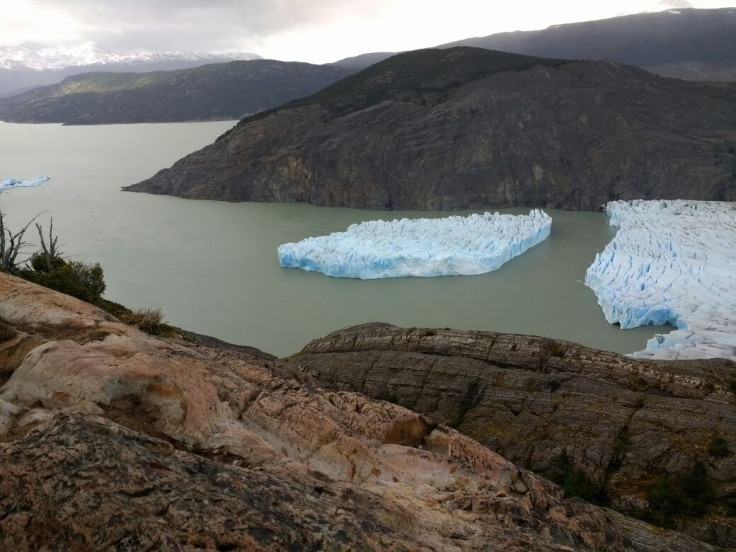'Larger than normal' iceberg formed by rare rupture of Gray glacier in Chile
The newly formed iceberg could become an obstacle to navigation if it disintegrates into smaller pieces.

A large iceberg has broken off the Gray glacier in Chile, authorities announced on 28 November. The newly independent ice block was visible floating in waters of a glacial lagoon near the southern tip of South America.
Rangers at Chile's Torres del Paine National Park, which is home to the Gray glacier, first identified the detachment of the mass and Chile's Conaf forestry service later shared photos of the rupture online with details of the blue-white slab of ice. According to their report, it measures 350 metres (1,148 feet) in length and is 380 metres (1,247 feet) wide. They were not able to confirm what caused the portion of the glacier to break off but said it was a rare occurrence, which last took place in the early 1990s.
Dr Ricardo Jaña, glaciologist from the Chilean Antarctic Institute (INACH) confirmed that the iceberg was "compact and consistent".
"This is a situation we had anticipated, but the most singular and anecdotal thing is that it is an iceberg of much larger dimensions, which is notable," he said, suggesting that an unsupported "bulge" at the front of the glacier may have created some instability and caused the block to separate.
While ice breaking off glaciers is a common phenomenon, Jaña suggested that global warming may have contributed to the latest rupture. "All the glaciers that melt the interior of the continents flow, drain lakes, rivers and go to the sea increasing their average level. In these moments, the ice looks compact and consistent, but it becomes a threat, as it will move and fragment into smaller pieces," he said.
Lake Gray, in which the iceberg is floating, is around 13 kilometres long, but only 9 kilometres wide. When the floating ice mass breaks down, it could cause obstacles to navigation in the area. Torres del Paine is one of Chile's most popular tourist attractions and according to Conaf, draws more than 115,000 visitors annually.
Antarctic and Greenland glaciers have seen some serious fissures and ruptures this past year. Most recently, a giant iceberg four times the size of Manhattan broke off from the the Antarctic Pine Island Glacier. The ice shelf has also witnessed deep cracks of late.
The Petermann Glacier, Greenland's largest body of ice, has also become a cause of concern to researchers who identified a large crack along its surface.
This year's biggest iceberg development came in the form of the trillion tonne super iceberg that broke off the Larson C glacier in Antarctica. The mass is a quarter of the size of Wales.






















